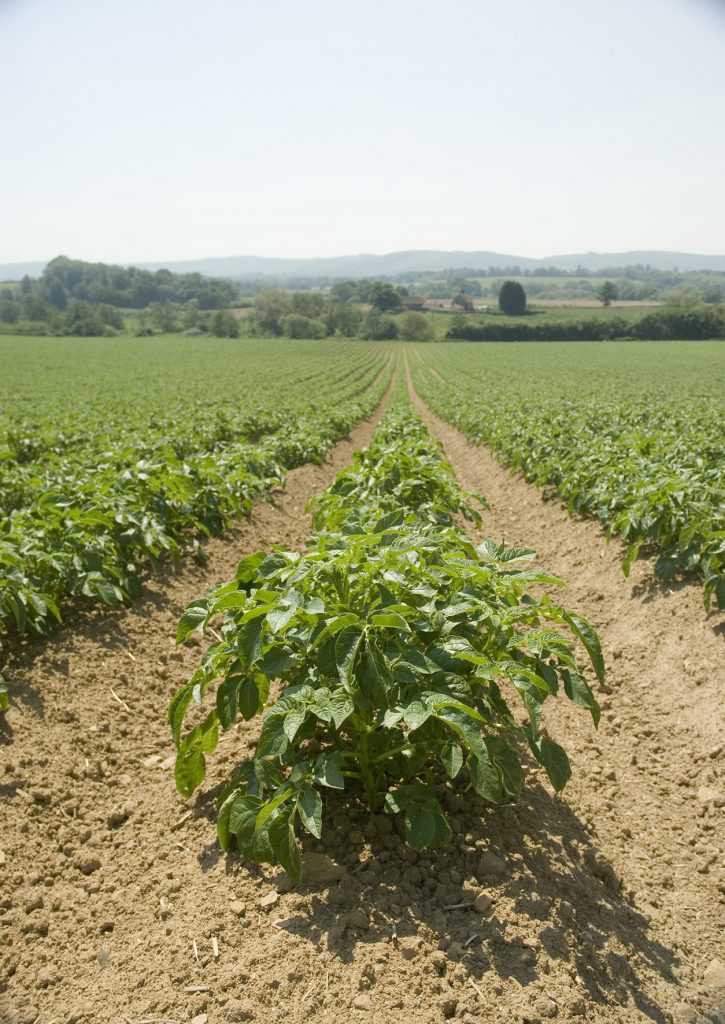Potato plantings down 3 per cent amid extreme weather conditions
21st August 2018
The Agriculture and Horticulture Development Board (AHDB) estimates that the total area in Great Britain planted with potatoes is 119,000ha, a fall of 3 per cent on the previous year.
The Agriculture and Horticulture Development Board (AHDB) estimates that the total area in Great Britain planted with potatoes is 119,000ha, a fall of 3 per cent on the previous year.
This would represent the third-lowest planted area on record. The news comes in a challenging season for potato growers, with an agricultural drought likely to affect yields.
AHDB’s Sector Strategy Director for Potatoes, Dr Rob Clayton, believes that a resilient industry will maintain the supply of our British-grown crop.
He said: “Potatoes are a vital crop for families, providing 14 per cent of the vitamin C consumed in Britain as a staple that some of our favourite meals are based on.
“This has been a tough and stressful season for growers, we do not underestimate that. However, we welcome news that supply chains are working closer than ever before, and that continual improvements are leading to reduced food waste at all points from the grower to the consumer.”
The Environment Agency (EA) yesterday (1 August) announced further support for drought-hit farmers, ahead of the NFU’s drought summit held on the same day. While, In Scotland SEPA has given a commitment to help growers continue to access the water they need for irrigation.
The ultimate size of the potato crop, and how the market firms in response, will not be known until harvest. At five year average yields, this would equate to a total potato harvest of 5.7 million tonnes(Mt).
Dr Clayton said: “The season started with sub-zero temperatures brought by ‘the beast from the East’, followed by a wet spring that delayed planting. Since then, we’ve seen one of the driest combined June and July periods on record, so most growers are reporting that yields will be down.
“Farmers have been working round the clock to minimise this, with teams working overnight so that any water used does not evaporate in the hot sun. There is still some growing season to go, so it is impossible to accurately predict how far down they will be.
“Variables such as the weather and the availability of irrigation could go some way to mitigating earlier conditions. Growers will be making contact with local EA agents to understand the additional flexibility on abstraction announced yesterday. Equally important will be the regular contact between growers and customers as they work to make the most from this year’s crop.”
| If 2018 yield is equal to: | Yield t/ha | Production (Mt) | Year-on-year change |
| Five year average | 47.4 | 5.7 | -6% |
| Five year average – 1% | 46.9 | 5.6 | -7% |
| Five year average – 5% | 45.0 | 5.4 | -11% |
| Five year average – 10% | 42.7 | 5.1 | -16% |
The table above provides examples of the potential size of the British crop, based on a reduction from the five-year average yield. For example a yield reduction of 10 per cent, added to the predicted three per cent fall in planted area would see a total crop of 5.1 Mt, down 16 per cent. If the agricultural drought persists, then yields could be lower still.
Dr Clayton said: “The good news for consumers is, thanks to the tireless efforts of growers, they will be able to enjoy potatoes and potato products over the coming year.
“What we are likely to see are smaller potatoes, but levels of vitamins and fibre will be unaffected and potatoes will remain a great value food.”
Growers can find further information and resources at ahdb.org.uk/drought

